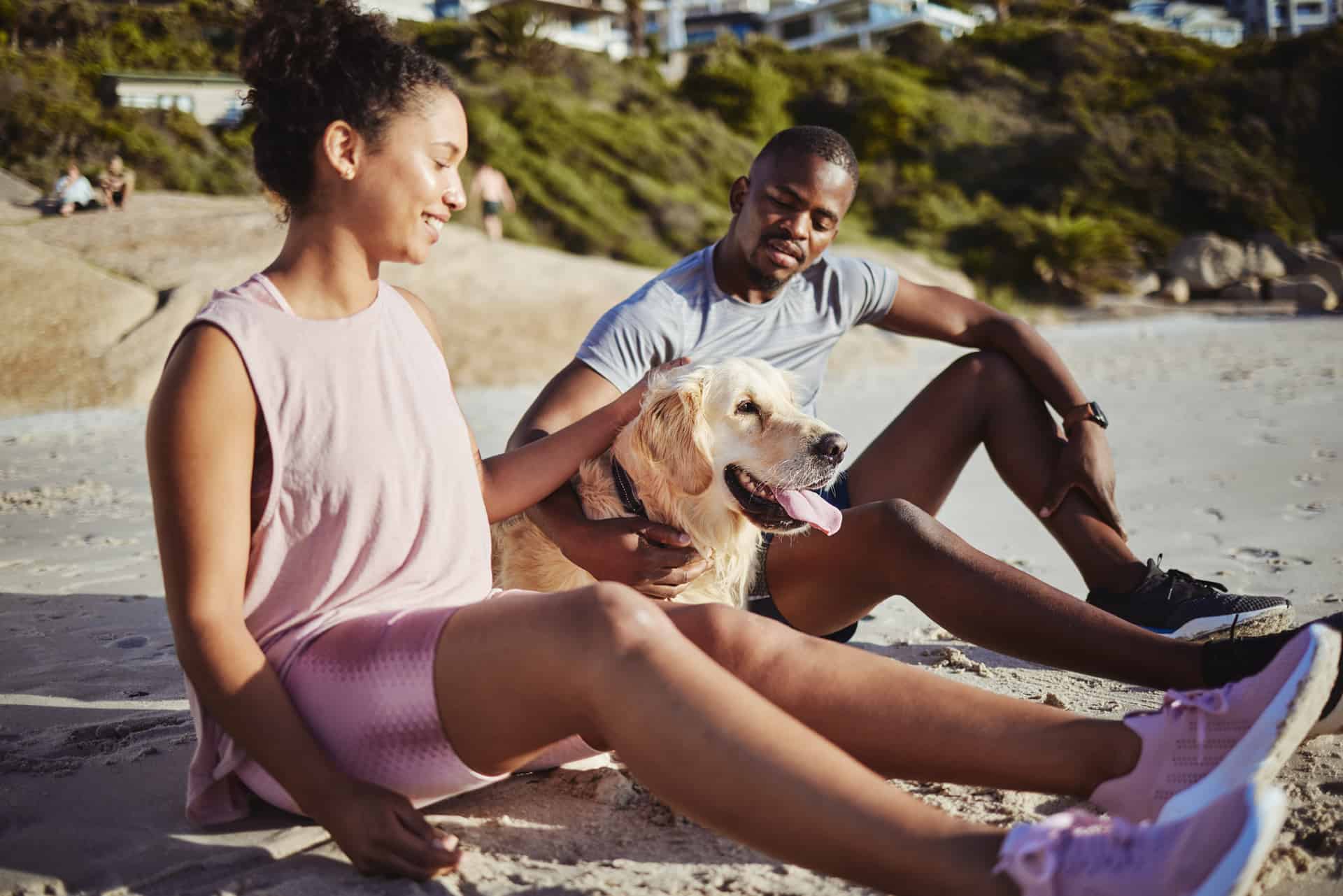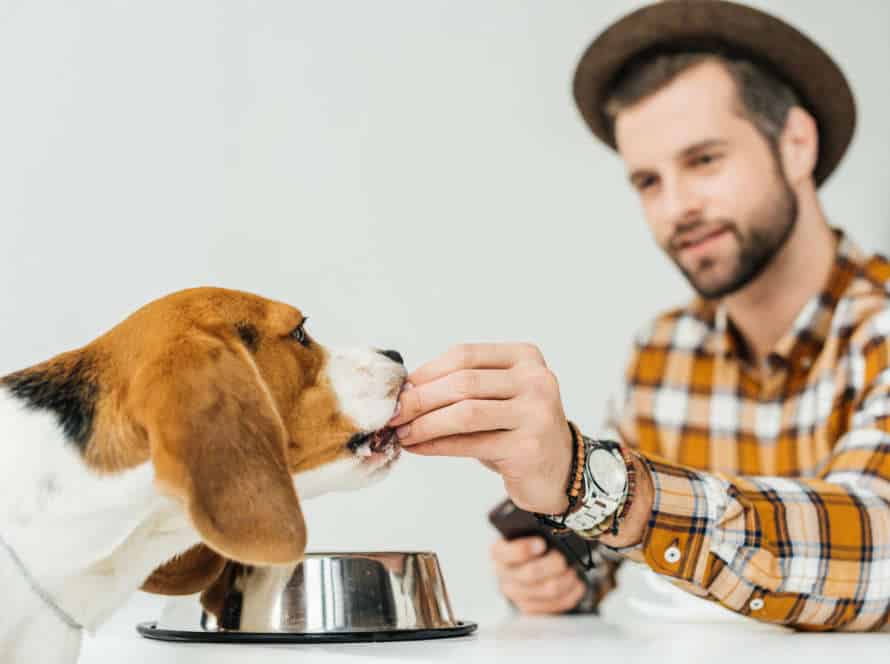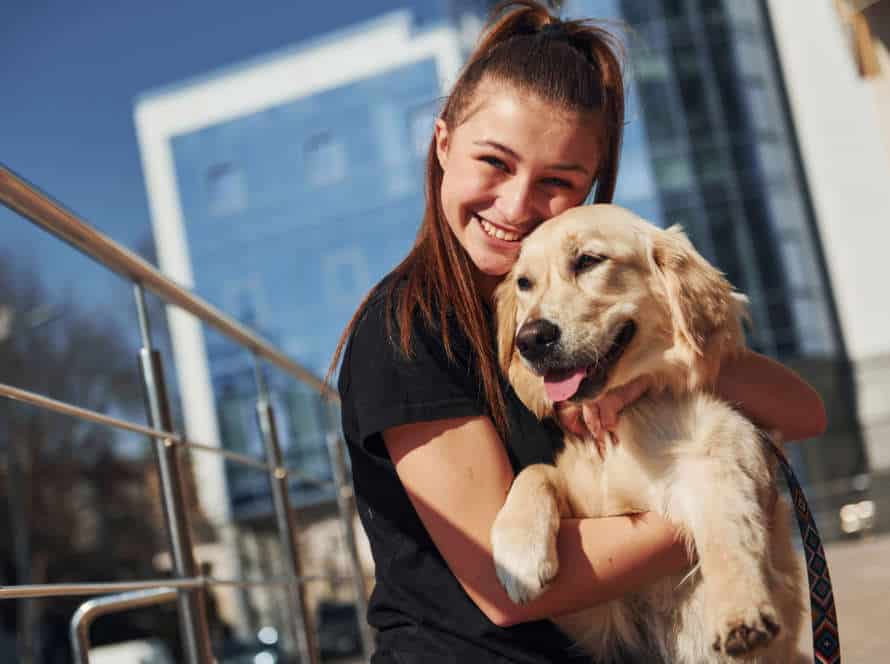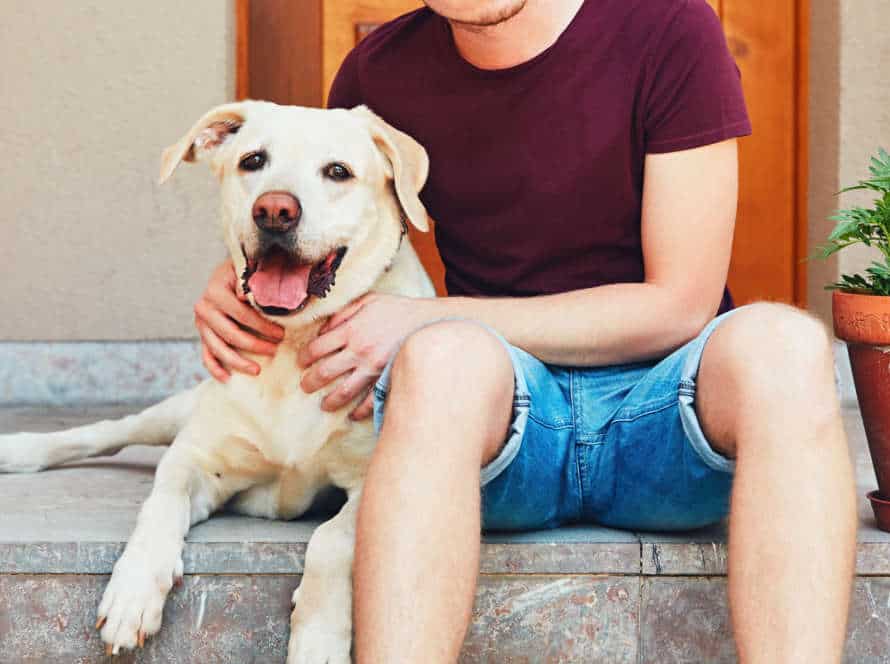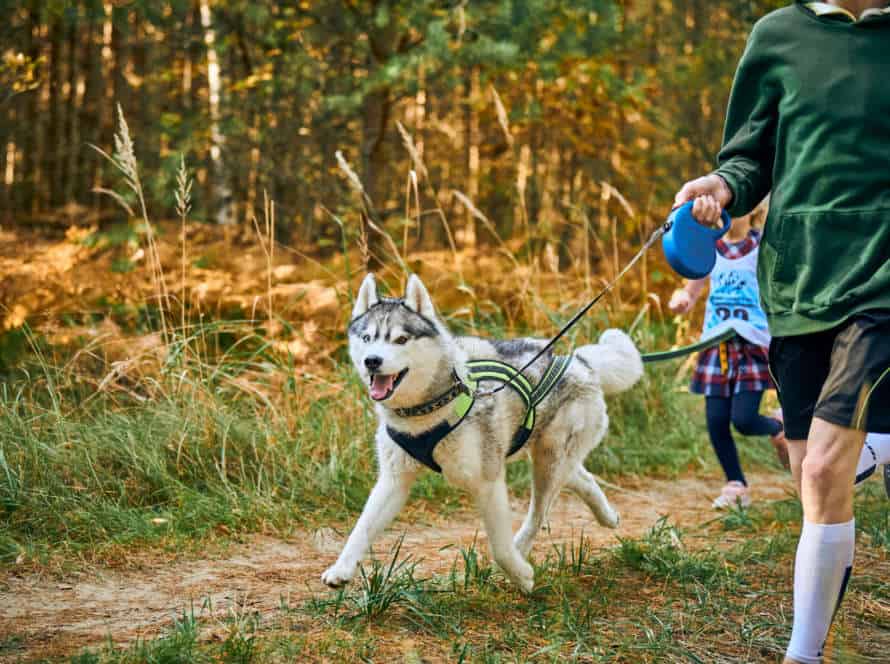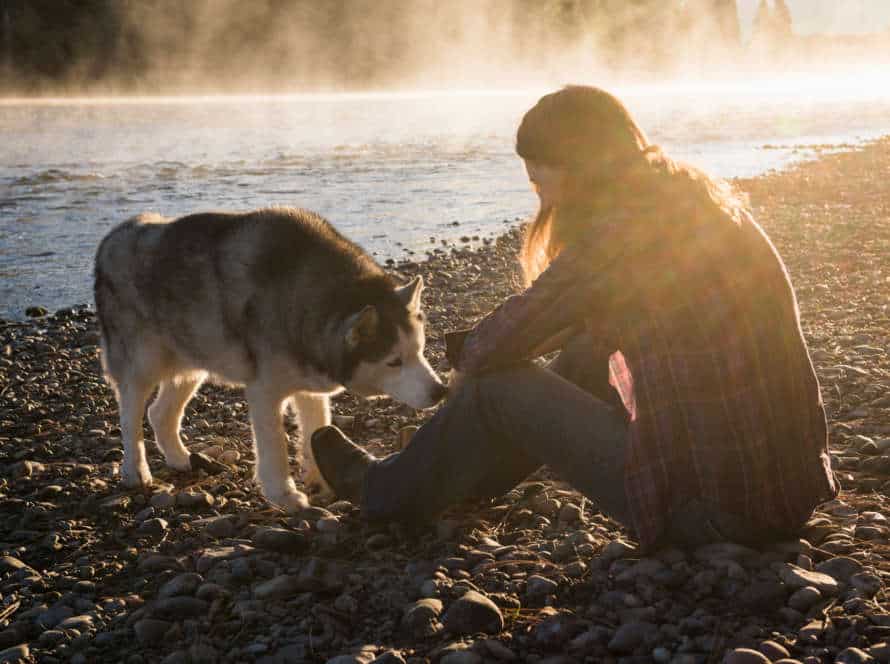How to Tailor Your Dog’s Exercise Routine to Their Needs
Tailoring your pup’s exercise routine is key for their health and wellbeing. Here’s how to customize a workout plan that works for them:
- Check the breed, age and size of your dog when deciding how often and how intense exercise should be.
- Include exercises that match their natural inclinations, like fetching, tug of war or jogging.
- Choose an environment they are comfortable in, taking into account weather and time of day.
- Watch out for signs of over-exercising and adjust the routine accordingly.
- Reward with fresh water and snacks after every workout.
By customizing a plan for your pup, you can help them lead an active and healthy life, while also having fun together!
Understanding Your Dog’s Exercise Needs
Exercising your pooch can be fun for both of you. Yet, comprehending what type and how much exercise is suitable for your dog is vital for creating a routine that works for them. Here, let’s examine the elements that should be taken into account when devising a plan for keeping your dog fit and lively.
Factors that influence your dog’s exercise requirements
Pet owners must think of several factors when creating an exercise routine for their canine buddy. These are:
- Breed: Different breeds have varying exercise needs. For instance, Greyhounds need short, intense exercise, while Retrievers need longer, moderate exercise.
- Age: Pups need short, low-intensity exercise, while adult dogs need more frequent exercise. Senior pooches need gentle exercise to protect their aging joints.
- Health: A dog’s physical condition affects its exercise tolerance. Dogs with health issues, such as arthritis or obesity, require a gentler form of exercise.
- Energy level: A dog’s energy level determines its exercise needs. High-energy breeds like Border Collies or Huskies need more frequent, high-intensity exercise for optimal health.
Assessing your dog’s exercise requirements based on breed
Varying breeds of dogs have diverse exercise requirements, so it is important to recognize your pup’s breed in order to craft a workout plan that meets their needs. Examples include:
- High Energy Breeds: Dalmatians, Boxers, and Jack Russell Terriers all possess high energy levels and need physical and mental stimulation. These breeds should be provided with two hours of exercise each day, through activities like walking, running, and playing.
- Sporting Breeds: Retrievers, Spaniels, and Pointers are bred for hunting and thus need a high amount of exercise. These dogs should be supplied with an hour of exercise daily, with running, swimming, and games!
- Small Breeds: Chihuahuas, Pomeranians, and Yorkies have lower exercise demands and are content with short walks and indoor playtime. These puppies may only require 30 minutes of exercise each day.
- Senior Breeds: Elderly canines have lower energy levels and may require shorter, more frequent walks, or low-impact activities like swimming or gentle playtime.
A pro tip: Consult with a veterinarian to correctly ascertain the right exercise routine corresponding to your dog’s breed and age.
Assessing your dog’s exercise requirements based on age
Humans and dogs have different exercise needs as they age. To keep them healthy and happy, adjust the exercise routine to their age.
Here are some considerations for your dog’s exercise requirements by age:
- Puppies: They need gentle exercise to build muscles and coordination. Short walks, play sessions, and supervised free play work best.
- Adult Dogs: Regular exercise is necessary for physical and mental health. Daily walks, runs, hikes, and play sessions are ideal.
- Senior Dogs: Reduced mobility and stamina mean gentle exercises like short walks or swimming should be done to keep them healthy without stressing.
Tailoring the exercise routine to their age and abilities will help ensure a long and active life.
Factors to Consider Before Starting an Exercise Routine
Before exercising your pup, think about certain elements. Size, breed, age, health, and energy level of your dog are key. Also, your lifestyle and what you prefer must be considered. We’ll look closer at these factors in this article.
Health and medical conditions
Before starting an exercise routine, consider your health and medical conditions. Here are factors to consider for safety:
- Past/present injuries – Consult a doctor/physical therapist for advice on which exercises to avoid/modify.
- Chronic medical conditions – Check with a doctor before starting any exercise regimen.
- Medication – Ask a doctor if any precautions should be taken during exercise.
- Age – Tailor your routine to your age and physical capabilities.
For pets, consider:
- Age/breed – Determine intensity/frequency of exercise.
- Size/weight – Larger dogs may need more exercise.
- Fitness level – Start slow & gradually increase intensity.
Remember to always consult a vet before any exercise routine with your pet.
Diet and nutritional requirements
Diet and nutrition are essential for a successful exercise routine for your dog. Before you start your furry pal’s exercise program, consider these factors:
- Age: Young dogs need more calories to grow, while older ones need fewer calories to stay slim and strong.
- Weight: Overweight dogs should stick to low-impact exercises; underweight ones may need to increase their calorie intake to build muscle.
- Breed: Different breeds have different energy and activity levels and need different amounts of exercise.
- Health Conditions: Dogs with existing health issues may need specific diets/exercise routines.
By getting to know your pup’s nutritional requirements and adjusting their exercise plan, you can keep them healthy and cheerful for years!
Behavioral issues
Behavioral issues in dogs can arise due to a lack of physical and mental stimulation. Tailor exercise routines to suit their individual needs. Consider factors such as breed, age, weight and activity level.
Retrievers need more exercise than others. Senior dogs need gentle exercise. Overweight dogs need low-impact exercises. High-energy dogs may benefit from interval training.
Monitor behavior during exercise for safety. Incorporate mental stimulation with activities like training and puzzle toys. Keeping these factors in mind will lead to a happier and healthier pet.
Tailoring the Exercise Routine to Your Dog’s Needs
Exercise is crucial for every doggo! However, the right kind and amount of exercise depends on breed, age, and health. So, it’s best to customize your pup’s workout to fit their specific needs. In this article, we’ll look at the different kinds of exercise and how to decide what’s best for your furry pal.
Types of exercises that suit your dog’s breed
Different breeds of dogs need different types of exercises for staying healthy and happy. Here are best exercises for a few popular breeds:
- Labrador Retriever: High-energy Labs love swimming, fetching and running for long periods.
- Bulldog: Not so active, Bulldogs prefer moderate exercise like short walks and indoor games.
- Greyhound: Sighthounds bred for speed and endurance, Greyhounds need lots of running, playing outdoors and agility courses.
- Pug: Prone to obesity, Pugs need moderate exercise like daily walks or playtime.
- Border Collie: The most intelligent dog breed, Border Collies need many hours of exercise such as frisbee or agility training as well as mental stimulation.
Remember, every pup is unique, so their exercise needs will depend on personality and breed. Always consult your vet before starting a new routine.
Types of exercises that suit your dog’s age
Different ages of dogs need distinct exercises for keeping them healthy, active, and mentally stimulated.
- Puppies: Short, low-impact exercises and playtime are best for their coordination and social skills. High jumps and rough play can be damaging.
- Adult Dogs: Moderate-intensity exercises each day – like brisk walks, jogs, hikes, or swimming – keep them fit.
- Senior Dogs: Low-impact exercises like leisurely walks and gentle stretches help with mobility, prevent joint pain, and reduce stress.
Tailor the exercise to your dog’s individual needs and preferences – this makes it safe and fun!
Balancing between exercise and rest for your dog
Maintaining your pup’s physical and mental well-being requires balance between exercise and rest. Customize their exercise routine to suit their age, breed, size and health. Here are some tips:
- Ask your vet what amount of exercise is best for your pup.
- Alternate low- and high-intensity activities to avoid over-exertion and boredom.
- Watch out for signs of fatigue or discomfort and adjust the routine accordingly.
- Give them rest and recovery time with a comfy bed or crate and water.
Balancing exercise and rest leads to a healthy and happy lifestyle for your furry friend.
Establishing a Consistent Exercise Routine For Your Dog
Regular exercise for your pup is super essential for their health. Create a routine based on their age, size, and activity level. Here’s a guide to develop a consistent exercise program tailored to their individual needs.
- Consult with your veterinarian to ensure your pup is healthy enough for physical activity.
- Design a routine based on your pup’s needs. For smaller dogs, indoor playtime and short walks may suffice, while larger, high-energy breeds may require longer walks or runs several times per day.
- Include a variety of activities to keep your pup engaged and prevent boredom. Examples include fetch, swimming, hiking, or agility games.
- Schedule exercise sessions at consistent times each day to establish a routine.
- Monitor your pup’s behavior and adjust the routine as necessary. If your pup seems overly fatigued or disinterested, consider modifying the routine or consulting with your veterinarian.
Step-by-step: do it now!
Setting goals and tracking progress
It’s crucial to set goals and track progress to establish a consistent exercise routine for your pup. Here’s how to begin:
- Figure out your dog’s exercise needs based on age, breed, size, and health.
- State exact goals for your dog’s routine, like taking daily walks or 30 minutes of playtime per day.
- Build an exercise plan with both physical and mental activities like running, playing fetch, and obedience drills.
- Use a calendar or an app to monitor progress and tweak the routine as needed.
- Keep tabs on your dog’s reaction to the exercise routine, and make changes such as increasing/decreasing duration and intensity.
- And don’t forget to reward your pup for their efforts with treats, praise, and love!
Maintaining a schedule and sticking to it
It’s important to have a consistent exercise plan for your pup. The key to success? Keeping a schedule and sticking to it, even when you don’t want to!
Here’s how to make an exercise routine tailored to your pooch:
- Figure out their breed, age, and activity level. Different breeds have varied needs and older dogs might require something different than younger ones. Check out their activity preferences – running, walking, fetching?
- Make a daily or weekly schedule that works for you and your pup. This will help them stay consistent and make it easier for you to stay on track.
- Keep to the schedule, even on days when you’re not feeling motivated. Regular exercise is a must for their physical and mental health.
- Vary the type and intensity of exercise depending on your pup’s needs. High-energy dogs need more vigorous activities while older dogs might need gentler walks.
Pro tip: Try new activities like hiking or swimming to keep your pup engaged and excited!
Increasing the intensity of the routine over time
Gradually upping the intensity of your pup’s physical activity routine is vital for establishing a regular exercise regimen that suits them. Just like us humans, dogs need frequent exercise to stay healthy and content mentally. However, it’s essential to customise their routine to their personal needs and aptitudes. Here’s how to increase the intensity of the routine over time:
- Increase the duration and frequency of their exercise sessions bit by bit.
- Add variety to their routine – like walking, running, fetch or agility games.
- Introduce fresh challenges like jogging on hilly ground or jumping over small barriers.
- Keep an eye out for any signs of weariness or distress in your dog and modify the routine accordingly.
Frequent exercise is a must for your dog’s wellbeing and joy, but it’s important to tailor the routine to their individual needs over time.
Safety Precautions for Your Dog During Exercise
Before you get your pup movin’ on an exercise plan, think about their safety. This is a must if your pup is old, a baby dog, or has any health problems that could affect their exercise. Knowing the right safety steps to take when exercising your pup will keep them safe and active.
Knowing when to stop or reduce exercise intensity
It’s essential to know when to stop or reduce your dog’s exercise intensity. Here’s how to tailor their workout routine:
- Watch their behavior. If they start to lag, pant excessively, or show signs of discomfort, take a break.
- Gradually increase intensity. If they’re new to exercise, start slow and gradually build up. If they’re older or have health issues, adjust the routine to suit them.
- Think about the weather. Hot and humid weather isn’t good for dogs, so avoid intense exercise in the hottest parts of the day or switch to water-based activities.
- Hydrate. Always carry water and a drinking bowl for your dog during exercise to keep them hydrated.
Monitoring your dog’s signals, adjusting their routine, and considering external factors will ensure their safety and health during exercise.
Keeping your dog hydrated and well-rested
It’s vital for your pup’s overall health and safety that they stay hydrated and rested when exercising. Here are some tips to keep them healthy and happy:
Hydration:
- Offer water before, during and after exercise.
- Bring a collapsible water bowl and bottle on walks.
- Give them water breaks every 15-20 minutes.
- Look out for signs of dehydration, like panting, tiredness and dry gums.
Rest:
- Take breaks for them to rest and catch their breath.
- Avoid exercise in hot or humid weather.
- Check for signs of fatigue or exhaustion, such as lagging, heavy panting or sitting down.
- Adjust duration and intensity of exercise to suit their age, size and health.
By following these tips, you can make sure your pup gets the exercise they need while staying healthy and safe.
Pro tip- Always get advice from your vet before starting an exercise routine with your dog.
Using appropriate gear and equipment for the exercises
Using the correct gear and equipment for exercising is very important for your dog’s safety. As a pet owner, you should make sure your pup has the right stuff. Here are some points to consider:
- Collars and Leashes: Make sure your pup wears a good-fitting collar and leash when exercising. Avoid retractable leashes that could lead to accidents.
- Harnesses: Pick a harness that fits your dog’s size and strength. This is great for dogs with breathing problems.
- Protective Gear: Depending on the activity, you may need protective gear like paw boots or a safety vest to keep your pet secure.
- Water: Always bring water for your pup to stay hydrated during exercise.
You should tailor your pup’s exercise routine to their needs to stop any injuries. Different breeds have different exercise needs. Talk to your vet to find a suitable and safe exercise routine for your furry best friend.
Pro tip: Keep an eye on your pup’s breathing and energy levels when exercising.
Frequently Asked Questions
1. How much exercise does my dog need?
The amount of exercise your dog needs depends on several factors such as their breed, age, and overall health. Generally, dogs need around 30 minutes to 2 hours of physical activity per day.
2. Can I customize my dog’s exercise routine based on their needs?
Yes, you can tailor your dog’s exercise routine based on their specific needs. For example, older dogs or those with health issues may need gentler forms of exercise such as short walks, while younger and more active dogs may benefit from more strenuous activities like running or hiking.
3. What are some signs that my dog is getting too much exercise?
If your dog appears fatigued, is panting heavily, shows signs of stiffness or lameness, or has trouble standing, they may be getting too much exercise. It’s important to pay close attention to your dog’s behavior and adjust their routine if necessary.
4. What are some recommended types of exercise for dogs?
Some great forms of exercise for dogs include walking, running, hiking, swimming, and playing fetch. It’s important to choose activities that are appropriate for your dog’s age, breed, and overall health.
5. How can I make sure my dog gets enough exercise when I’m busy?
Consider hiring a dog walker, enrolling your dog in doggy daycare or hiring a pet sitter to ensure your dog gets plenty of exercise when you’re unable to provide it yourself.
6. Should I consult with my veterinarian before starting an exercise routine for my dog?
Yes, it’s always a good idea to consult with your veterinarian before starting any sort of exercise routine for your dog. They can provide advice on your dog’s specific needs and any health issues that may need to be taken into consideration.

